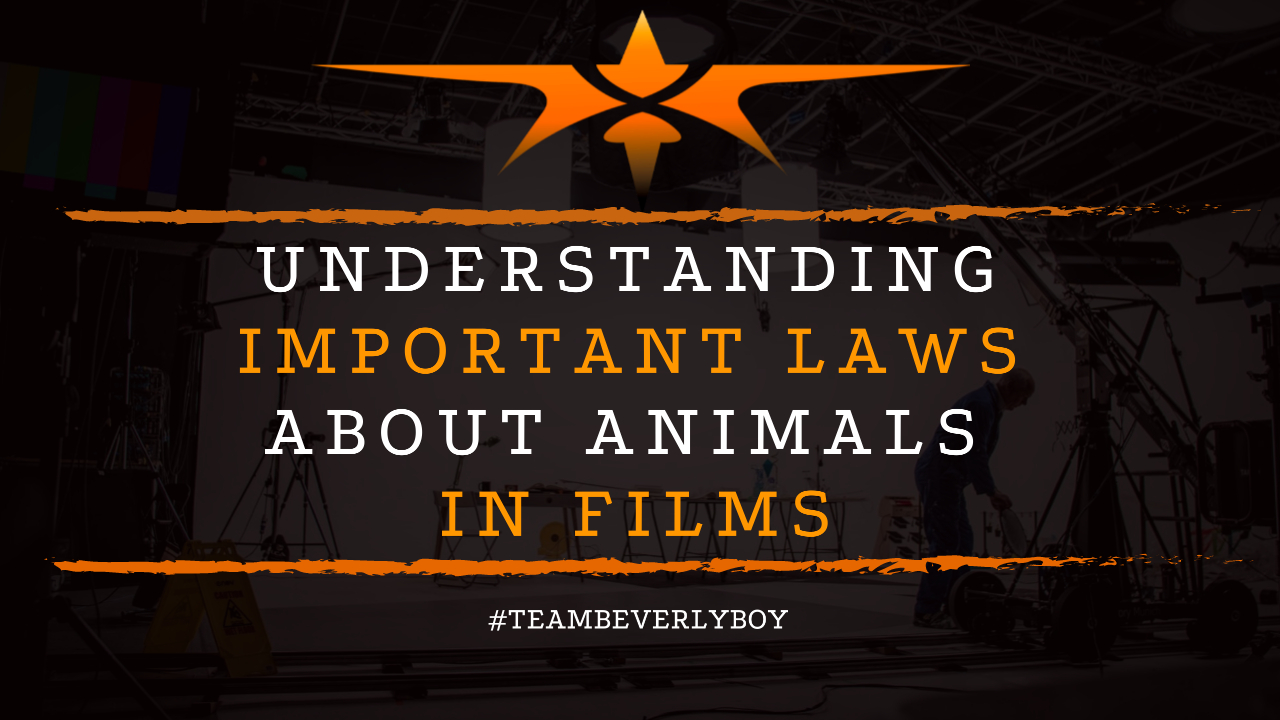
Understanding Important Laws About Animals in Films
The introduction of animals into the entertainment industry dates back as far as 1870. When animal talent was present in various theatrical shows then known as vaudeville shows. In fact, animal talent has been present in film media. Since the 1920s when motion pictures would replace vaudeville shows. This is basically just as long as human actors have been involved in the film industry. But it hasn’t always been fun, safe or otherwise even humane. This is why laws about animals in films have come up throughout the history of filmmaking.

Although animals are an incredibly popular presence in the film industry. Humans haven’t always done their part to protect. Or otherwise respect the lives and the rights of the animals that are procured for the purpose of a film production.
That’s why laws about animals in films have become a prominent element within the industry with animal right’s activists. Doing their part to ensure that abuse, neglect or other harmful treatment.
Doesn’t occur in conjunction with the animals that are involved in the film and television productions we’ve all come to enjoy.
Humane Societies
Whether filmmaking in the U.S., the U.K., or elsewhere in the world. Laws about animals in films are likely to guide the direction. In which a production employs animal talent.
Here in the United States, The American Humane Association’s “NO Animals Were Harmed” program represents key protections and guidance on safe animal welfare practices.
In the United Kingdom, The Independent Animal Welfare Advisory. In conjunction with the Royal Society for the Prevention of Cruelty to Animals are involved in procuring animal rights within the respective area.
Varies by State
The following laws about animals in films are active as a means of protecting animal welfare. Particularly as animals are exhibited via film and television media.
In general, laws about animals in films have primary representation by the individual states. That enact local legislation to protect animal rights as they apply to filmed media.
However, at the federal level, there are a few protections in place. Which also form the basis of guidance for many of the local, state or city level laws about animals in film.
Animal Welfare Act (AWA)
The Federal Animal Welfare Act (AWA) describes particular protections for animals that “exhibitors” must follow. Under this act, film producers that choose to use animal actors in their productions are considered “exhibitors”.
And are bound by the technical legal implications of the AWA. Specifically, the AWA provides for humane care and treatment of animals that are intended for exhibition purposes.
Including those in use during the production of film, video, or television footage. Exhibitors, in this case film producers, must maintain humane standards of care and treatment for animal actors otherwise they risk enforceable criminal and civil penalties.
Unprotected Animals
Unfortunately, the AWA does not provide protections for ALL animals. In fact, many animals are explicitly omitted from the protections afforded by the Federal Animal Welfare Act.
Including birds, arts, mice, horses that are not for research purposes. And other farm animals such as livestock and poultry.
Federal Endangered Species Act (ESA)

Federal level laws about animals in films have extreme limitations in scope at this time. As local authorities at the state or city level provides the majority of the legal coverages for animal actors or talent.
However, the Federal Endangered Species Act (ESA) represents another means of possible federal level protection for some animals. But not all.
Taking Endangered Species
The ESA identifies endangered species, threatened species, and animals which, if it were not for protections, would likely soon become extinct.
Under the ESA, film producers and those in the entertainment industry. Or any industry for that matter may not “take” any endangered species.
Under this federal law that provides protections for animals in film. The term “take” means to hunt, shoot, harass, pursue, harm, trap, kill, wound, capture, collect or otherwise attempt to engage in such conduct.
To help you understand how federal laws about animals in films. Like the Federal Endangered Species Act work for filmmakers.
Let’s take a look at a scenario:
A filmmaker wants to produce a film that requires the use of a polar bear. Which happens to be an endangered species. The Federal ESA prevents the filmmaker from being able to “take” a polar bear from the wild.
The same would hold true for other endangered species. Such as a Siberian Tiger, a Green Sea Turtle, or a Leopard. As each of these are under federal legislation protection.
Individual State Animal Cruelty & Animal Cruelty Depiction Laws
Individual state laws about animals in films primarily focus on anti-cruelty laws. And the prevention of the depiction of animal cruelty.
Every state in the country has laws that prevent animal cruelty. Which apply to filmmakers as well as to the general public.
Most of the state laws on animal cruelty will also cover animal neglect. As a means of protecting animal talent involved in film production.
Neglect includes things like limiting food, water or shelter intake. Changing access to these elements. Or otherwise intentionally withholding such elements from animal talent.
Rising in Each State
The depiction of animal cruelty is another area. Where individual state laws about animals in films may impose criminal penalties for filmmakers. That include animal talent in their productions.
Depiction of animal cruelty means to film, represent. Or otherwise produce content that represents cruel or inappropriate treatment of animals.
In states that do have laws about animals in films. Which specify depiction of animal cruelty. It is unlawful to sell, distribute, or otherwise create videos which exhibit animal cruelty.
These laws are especially particular to California, Illinois, and Maine. But animal rights protections continue to gain popularity in other states, too.
Stricter Laws About Animals in Film Give Rise to a Reduction in Animal Talent

As more and more legal repercussions arise out of the mistreatment of animals on the film set and stricter laws about animals in film continue to form. Filmmakers are shifting their procedures.
So as to include fewer animal actors in their productions. The entertainment industry still focuses a lot around animals and continues to produce amazing films. That showcase animals in a variety of ways.
But their approach is much different. As animal rights organizations like People for the Ethical Treatment of Animals (PETA) and Animal Legal Defense Fund (ALDF) gain following. More and more filmmakers are turning to computer generated imagery.
And the use of various other unique technologies. In order to continue to produce films. Which showcase animal talent without actually incorporating live animal actors into the mix. Or at least without the use of live animals in potentially hazardous situations.
The Takeaway
As you can see, laws about animals in films can vary by state and are rarely enforced on the federal level. But this doesn’t mean that, as a filmmaker, you shouldn’t be ready to treat any and all animals.
That you incorporate into your film production with respect and the absolute best care possible. Animal actors may have insufficient protection by the federal government.
But local authorities are taking action more than ever before. To ensure that there are laws about animals in films. Which provide protections for animal talent.



